I haven’t sent out a newsletter all summer because I was in the final stretch of finishing a few pieces for my first artist reception. The reception took place last week in an intimate, candlelight setting with friends, family, and collectors. It was hosted by my dear friend Rachel, who owns an independent sustainable and vintage clothing store, Phosphene Studio, nearly everything I love in my closet is from there.
Rachel also has a gift for creating beautiful, minimalist and intentional spaces, so I trusted her completely to curate an evening centered around art and community.
Words can’t fully express what it felt like to work quietly in my home studio for over a year painting piece after piece and then see them all together in one space. To create in solitude and then release the work into the world is a kind of joy I wish for anyone who is quietly making.
I’ve been looking forward to sharing with this community what I've been working on. So here it is. This body of work includes two series: The first, Offerings, is inspired by the online “trad wife” trend, where young women with millions of followers share content about living like traditional 1950s housewives. They often present carefully curated scenes: home-cooked meals, spotless homes, devotion to family life and submissiveness to their husbands.
Last fall, I started noticing the rise and reach of trad wife culture. I began observing it the way a random toddler might give you an unwavering stare in the grocery store, equal parts confusion and fascination. I couldn’t stop looking. My curiosity led me down a rabbit hole, reading several takes on the phenomenon from writers here on Substack.
As someone who raised children while building a career, I understand the longing for a slower, more balanced motherhood. My brand of feminism is rooted in choice for all women to choose their path. The career vs stay at home discourse is a nonstarter for me, to each its own. What interested me more, though, was the performance. The curated motherhood, the domestic rituals and outfits staged for views, for brand deals. I wanted to paint it.
I painted three women. The first, a 1950s housewife, modeled after the women often featured in women magazines of that era. The second, a homesteading trad wife from the 2010s, which emerged in the wake of the 2008 recession, when self-sufficiency and a return to simpler living began to show up online. The last is a 2020s version—think Nara Smith—shaped by the covid pandemic where hyper-curated domesticity sells on social media. I wanted to capture a few markers in the trad wife lineage. All three, in their own way, reflect the performance of motherhood, crafted for public consumption.
Each portrait in Offerings features a woman holding, offering something - bread, jello, a pot. The food represents gestures of care, domestic grace, and labor. The backgrounds are filled with figs, cherries, and blackberries. These fruits have long symbolized sweetness, sensuality, and femininity. But here, they also reflect the performance often expected of women: to be sweet, soft, agreeable, never angry, never withdrawn, never choosing a child-free life. Always pleasing, always palatable.
When I mentioned to a few people that I was painting trad-wives, several asked if anyone would actually want to buy a painting like that—if someone would proudly display it in their home. I said I didn’t really care if no one did. All I knew was that I needed to capture it. Sit with it, stare at it, and maybe, decades from now, remember this cultural moment through the work. That’s when I realized my commitment to art for art’s sake. I wasn’t concerned with whether it would appeal to a market.
The second series, Solitude, was inspired during my solo trip to Norway last August. I had so many moments during that trip and other solo trips I’ve taken where I felt so alive, so myself. I wanted to capture that feeling. The series are quiet portraits of women alone—in contemplation, at ease or joy. These portraits feel like glimpses into unguarded moments, as if the subject wasn’t aware a camera or a viewer was present.
These women are confident and relaxed, not performing for anyone. There is no audience. They aren’t offering anything to anyone. Solitude makes space for interiority, moments where attention turns inward, where nothing needs to be shown or explained.
I had no idea how these two series would come together in one space or how they would relate, but they did. In the room, it felt cohesive and true to what I wanted to convey. I felt a deep appreciation for having trusted my gut—choosing what to paint, how to paint it, even when it didn’t fully make sense at the time. And they came together exactly as they should that evening.
What’s Next
Now that the series is done, I’m feeling a bit lost and uninspired, but luckily I’m about to embark on my annual solo summer trip in a week. I’ll be traveling abroad for the rest of the summer, and I have a feeling inspiration will find me, just as these series found me last year. Over this past year of consistent creating, I’ve learned that the ideas and nudges always come. I just have to stay open and keep listening.
A Few things
Petya Grady interviewed me in her last Substack newsletter. Petya is everyone’s favorite bookworm on Substack so this was fun.
You can also read my artist journal interview with Phosphene Studio here.
Also, during my artist reception I created a playlist of some of the songs that were playing in my studio while painting the series. It’s an eclectic list - moving from Bon Iver, Prince to Afrobeats. Enjoy!
Happy Summer.

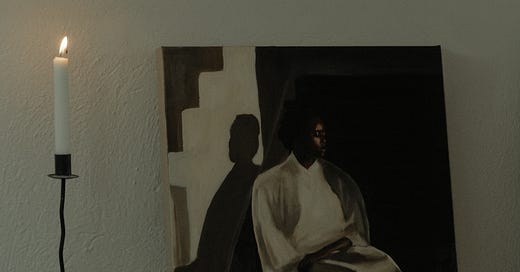



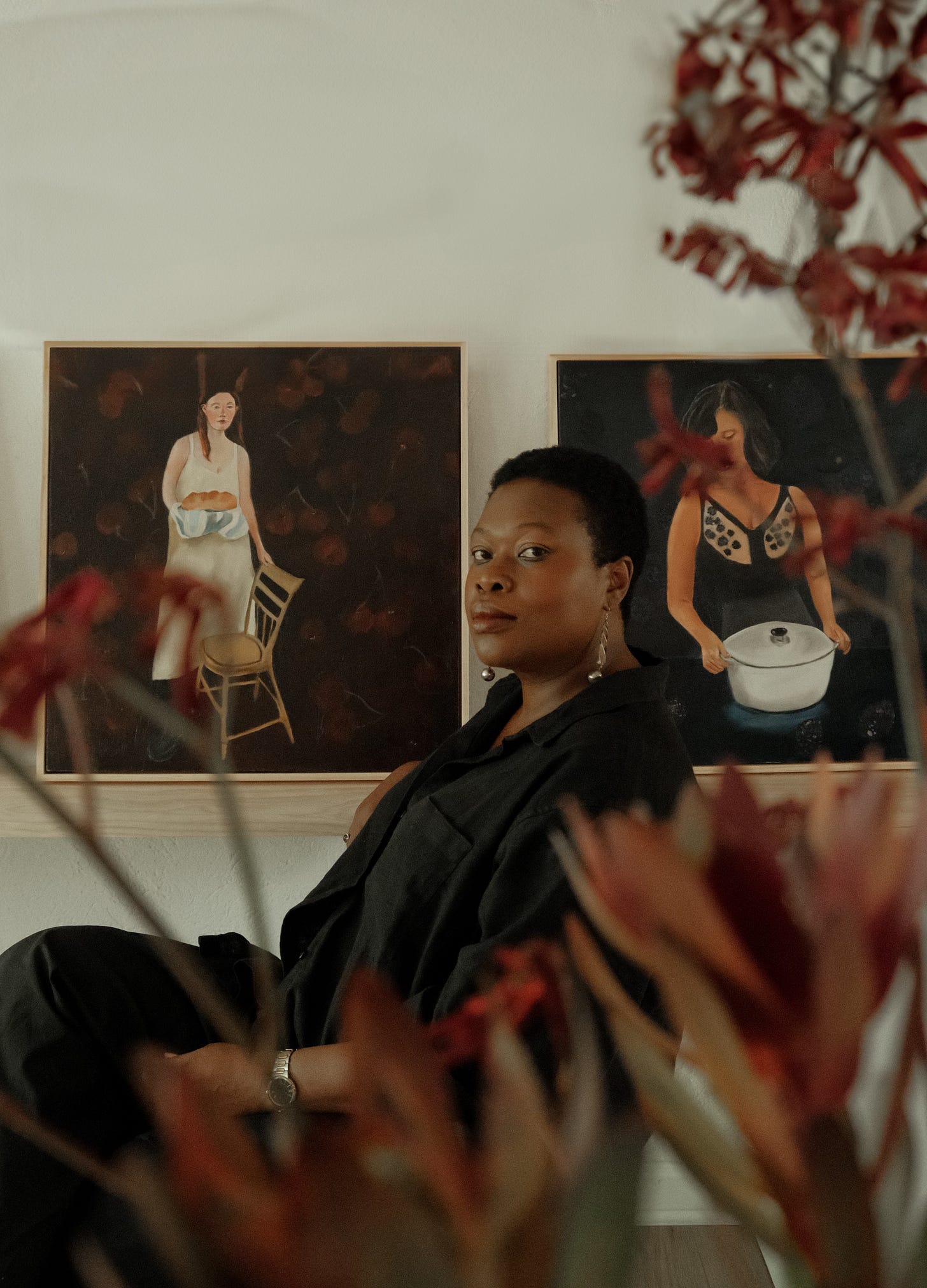
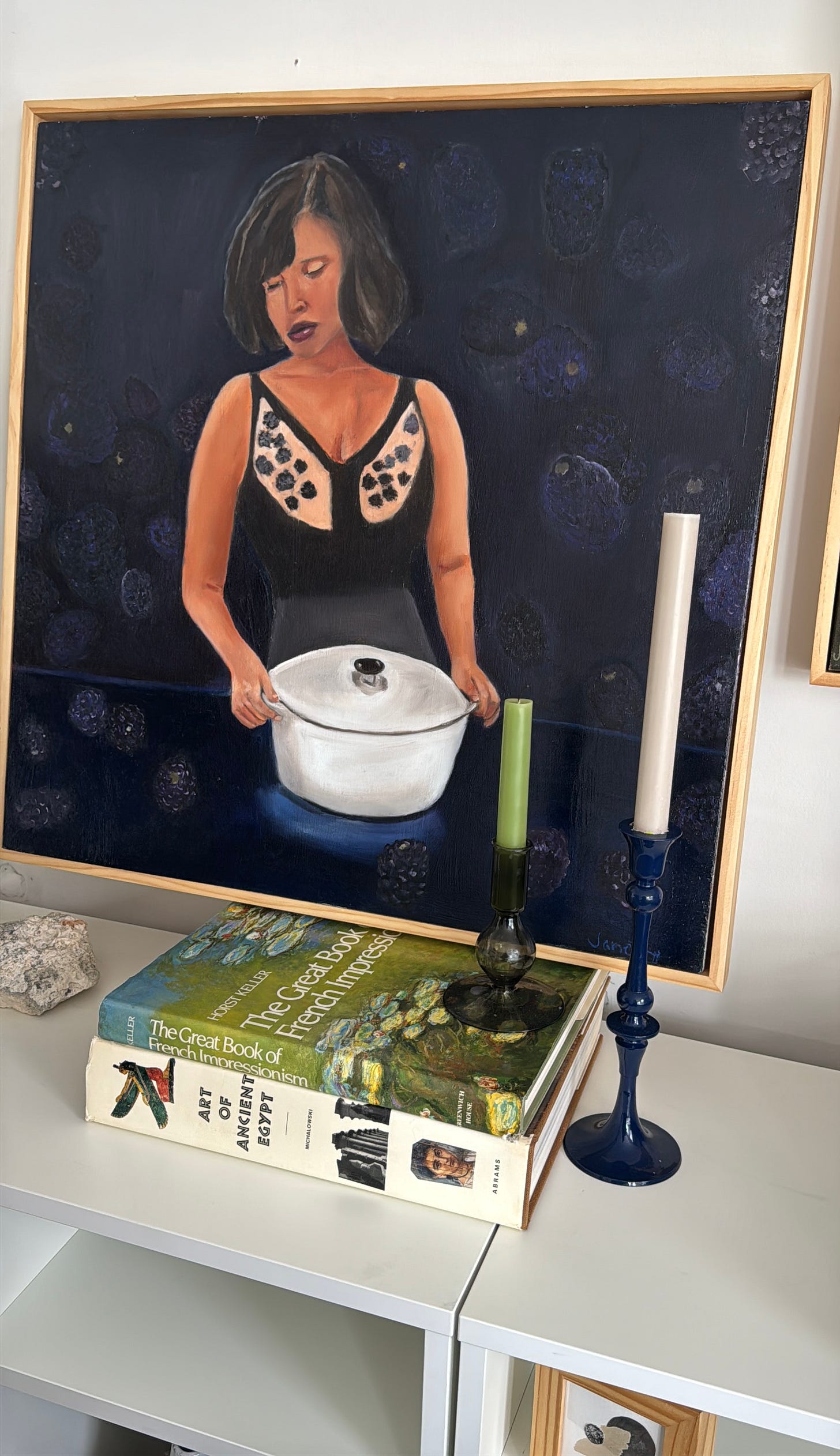



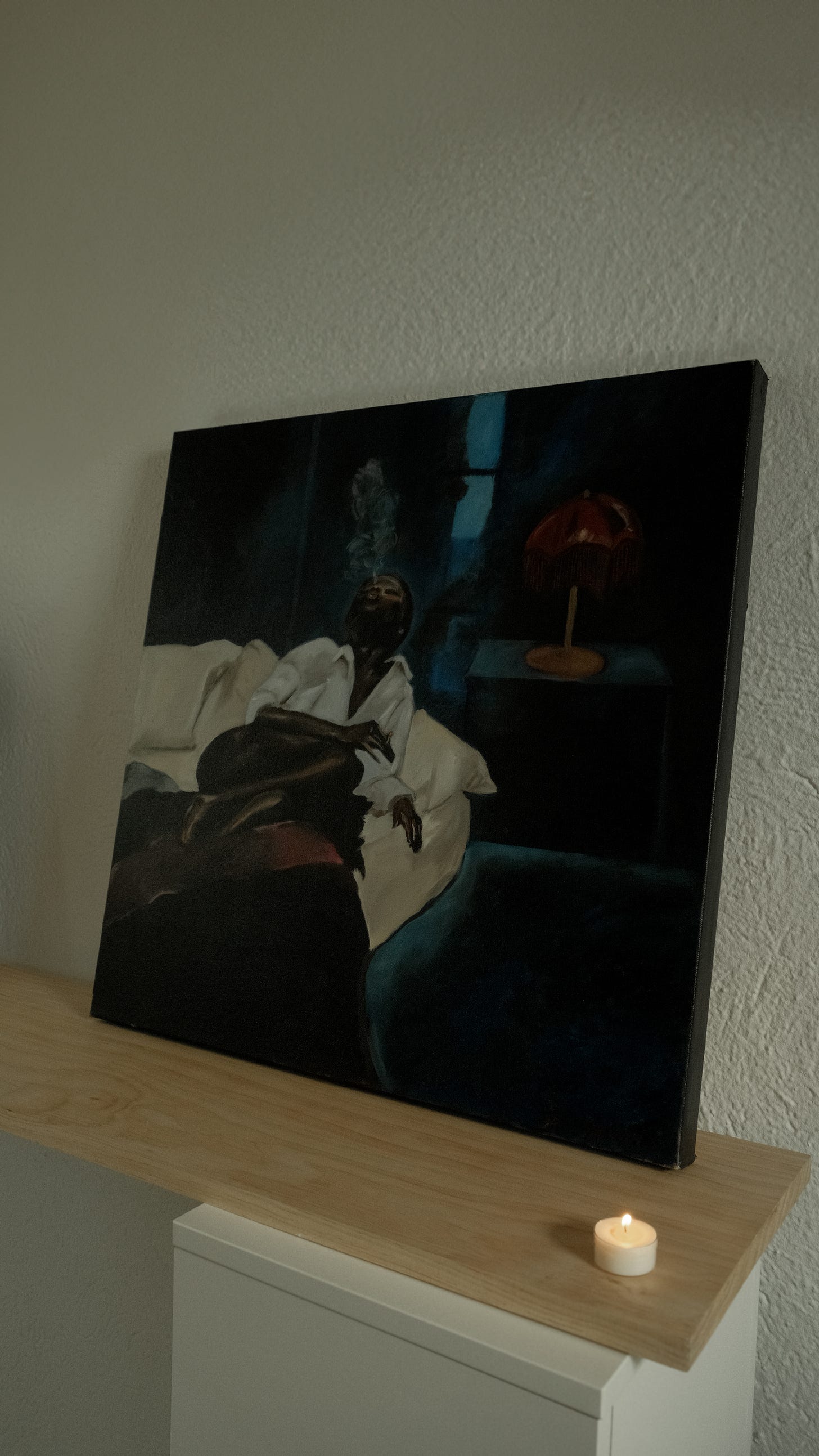

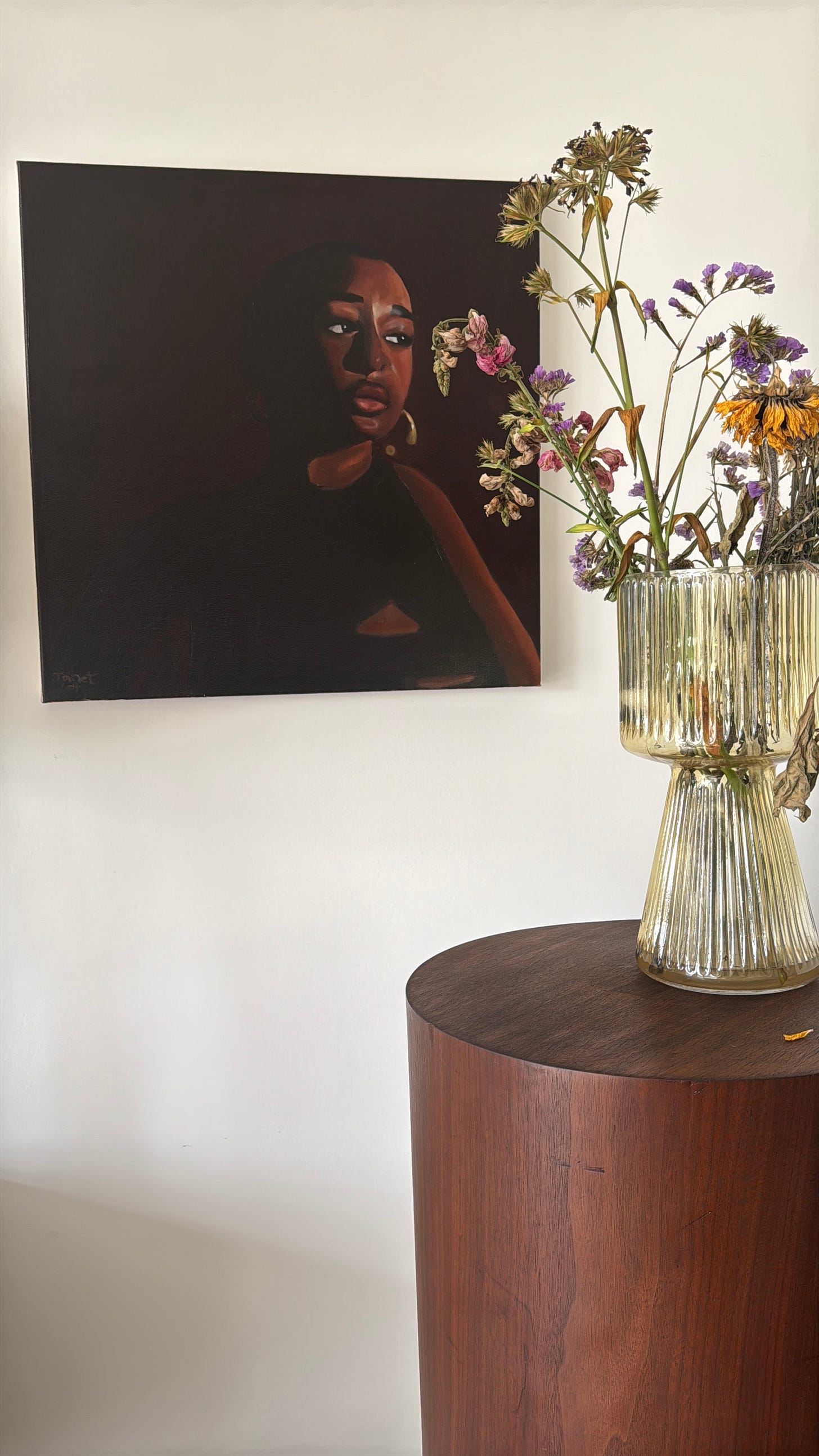
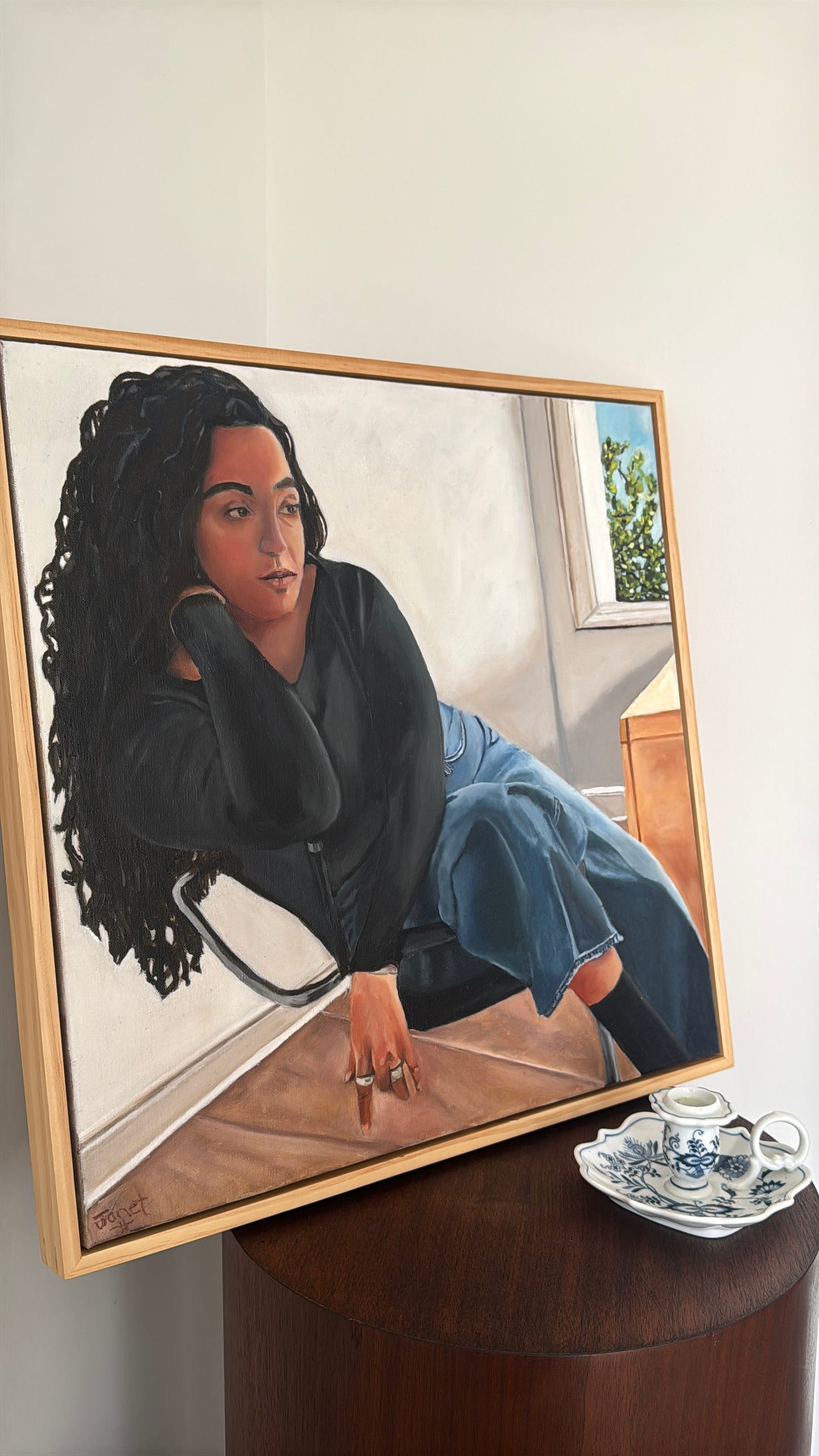
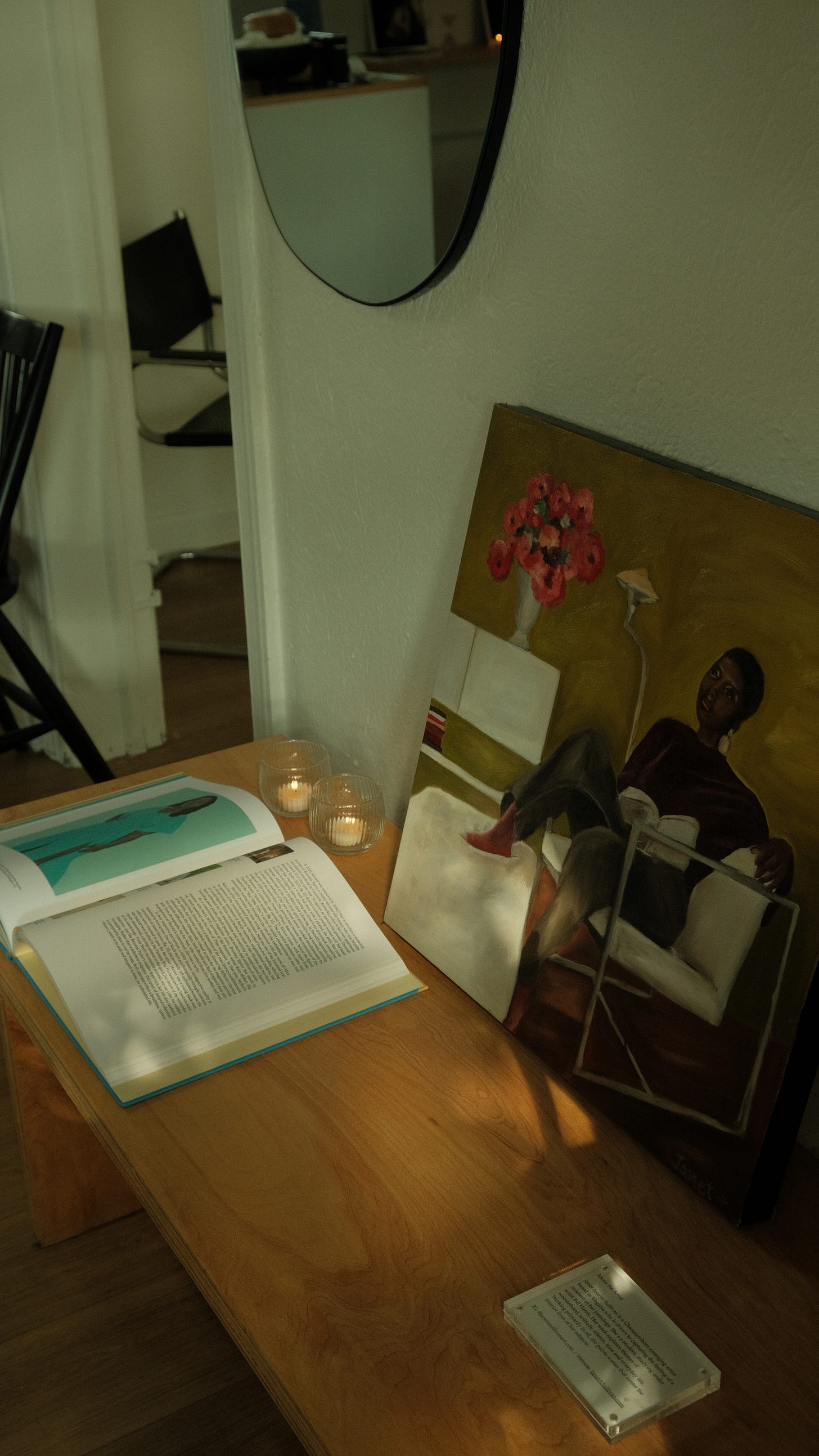


I’m here because of your interview with Petra! I loved your take on creativity and your pictures - they are beautiful, and very very powerful. From a very untrad wife over in England 🤗
Wonderful work, it must have been such an experience to see them all in your first show after working alone on them all year. I love "Exhale", it feels like that moment when we finally find ourselves alone and uninhibited.
I have similar views on the tradwife phenomenon and have written about it briefly. Your art on the subject is fascinating. Thank you for sharing.